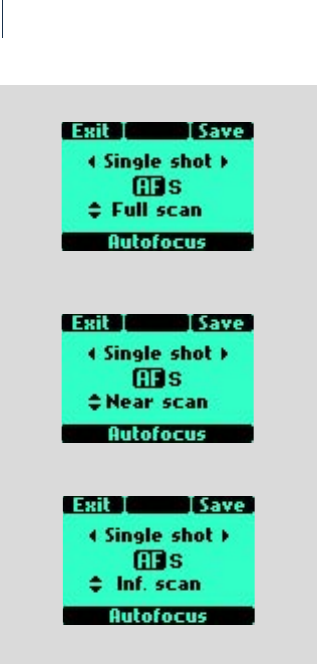
116
117
Hasselblad H1D
Hasselblad H1D
Note though that in this mode the lens will focus at a distance and will remain focused at that
distance while pressure remains on the shutter release button. In this way, you can focus on a
nearby object for example, temporarily positioned within the focusing zone on the viewing
screen and then without releasing pressure on the shutter release button, recompose knowing
that the focus remains on the object chosen even though it is now outside the focusing zone.
Releasing the pressure on the shutter release button and pressing again half way would now
change the focus setting to the distance of the object within the focusing zone.
Another method for users who prefer more manual focus control while maintaining the
benets of the accuracy of autofocus is to set the camera to Manual focus and the User button
to AF drive (see ‘User button function list’). Focus is then adjusted manually with the focus-
ing ring but when the User button is pressed, the autofocus facility temporarily operates in
AF S mode. Aer the new focus adjustment check has been made automatically, the camera
reverts immediately to manual focus control when the User button is released. erefore,
you can recompose the picture without having to maintain pressure on the release button
in order to retain the newly automatically made focus setting.
When using macro lenses or tele lenses you may nd it convenient to restrict the amount of
searching the lens will do to nd the perfect focus. When working close-up with a macro lens,
for example, it is of little use that lens will search in the innity range. To speed up focusing
therefore, you can restrict the lens scanning range to Full scan, Near scan and Innite scan. ese
are chosen using the rear control wheel.


















